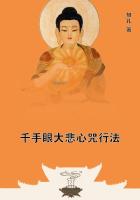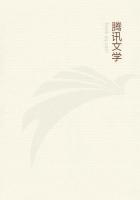Back of the schoolhouse rose a round hill, upon which, tradition said, had stood in colonial times a block-house, built by the settlers for defense against the Indians.For the Indians had the idea that the whites were not settled enough, and used to come nights to settle--them with a tomahawk.It was called Fort Hill.It was very steep on each side, and the river ran close by.It was a charming place in summer, where one could find laurel, and checkerberries, and sassafras roots, and sit in the cool breeze, looking at the mountains across the river, and listening to the murmur of the Deerfield.The Methodists built a meeting-house there afterwards, but the hill was so slippery in winter that the aged could not climb it and the wind raged so fiercely that it blew nearly all the young Methodists away (many of whom were afterwards heard of in the West), and finally the meeting-house itself came down into the valley, and grew a steeple, and enjoyed itself ever afterwards.It used to be a notion in New England that a meeting-house ought to stand as near heaven as possible.
The boys at our school divided themselves into two parties: one was the Early Settlers and the other the Pequots, the latter the most numerous.The Early Settlers built a snow fort on the hill, and a strong fortress it was, constructed of snowballs, rolled up to a vast size (larger than the cyclopean blocks of stone which form the ancient Etruscan walls in Italy), piled one upon another, and the whole cemented by pouring on water which froze and made the walls solid.The Pequots helped the whites build it.It had a covered way under the snow, through which only could it be entered, and it had bastions and towers and openings to fire from, and a great many other things for which there are no names in military books.And it had a glacis and a ditch outside.
When it was completed, the Early Settlers, leaving the women in the schoolhouse, a prey to the Indians, used to retire into it, and await the attack of the Pequots.There was only a handful of the garrison, while the Indians were many, and also barbarous.It was agreed that they should be barbarous.And it was in this light that the great question was settled whether a boy might snowball with balls that he had soaked over night in water and let freeze.They were as hard as cobble-stones, and if a boy should be hit in the head by one of them, he could not tell whether he was a Pequot or an Early Settler.It was considered as unfair to use these ice-balls in open fight, as it is to use poisoned ammunition in real war.But as the whites were protected by the fort, and the Indians were treacherous by nature, it was decided that the latter might use the hard missiles.
The Pequots used to come swarming up the hill, with hideous war-whoops, attacking the fort on all sides with great noise and a shower of balls.The garrison replied with yells of defiance and well-directed shots, hurling back the invaders when they attempted to scale the walls.The Settlers had the advantage of position, but they were sometimes overpowered by numbers, and would often have had to surrender but for the ringing of the school-bell.The Pequots were in great fear of the school-bell.
I do not remember that the whites ever hauled down their flag and surrendered voluntarily; but once or twice the fort was carried by storm and the garrison were massacred to a boy, and thrown out of the fortress, having been first scalped.To take a boy's cap was to scalp him, and after that he was dead, if he played fair.There were a great many hard hits given and taken, but always cheerfully, for it was in the cause of our early history.The history of Greece and Rome was stuff compared to this.And we had many boys in our school who could imitate the Indian war whoop enough better than they could scan arma, virumque cano.
XII
THE LONELY FARMHOUSE
The winter evenings of the farmer-boy in New England used not to be so gay as to tire him of the pleasures of life before he became of age.A remote farmhouse, standing a little off the road, banked up with sawdust and earth to keep the frost out of the cellar, blockaded with snow, and flying a blue flag of smoke from its chimney, looks like a besieged fort.On cold and stormy winter nights, to the traveler wearily dragging along in his creaking sleigh, the light from its windows suggests a house of refuge and the cheer of a blazing fire.But it is no less a fort, into which the family retire when the New England winter on the hills really sets in.
The boy is an important part of the garrison.He is not only one of the best means of communicating with the outer world, but he furnishes half the entertainment and takes two thirds of the scolding of the family circle.A farm would come to grief without a boy-on it, but it is impossible to think of a farmhouse without a boy in it.
"That boy" brings life into the house; his tracks are to be seen everywhere; he leaves all the doors open; he has n't half filled the wood-box; he makes noise enough to wake the dead; or he is in a brown-study by the fire and cannot be stirred, or he has fastened a grip into some Crusoe book which cannot easily be shaken off.Isuppose that the farmer-boy's evenings are not now what they used to be; that he has more books, and less to do, and is not half so good a boy as formerly, when he used to think the almanac was pretty lively reading, and the comic almanac, if he could get hold of that, was a supreme delight.
Of course he had the evenings to himself, after he had done the "chores" at the barn, brought in the wood and piled it high in the box, ready to be heaped upon the great open fire.It was nearly dark when he came from school (with its continuation of snowballing and sliding), and he always had an agreeable time stumbling and fumbling around in barn and wood-house, in the waning light.
John used to say that he supposed nobody would do his "chores" if he did not get home till midnight; and he was never contradicted.















